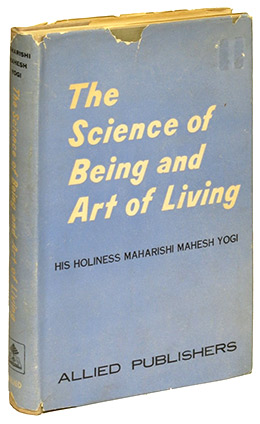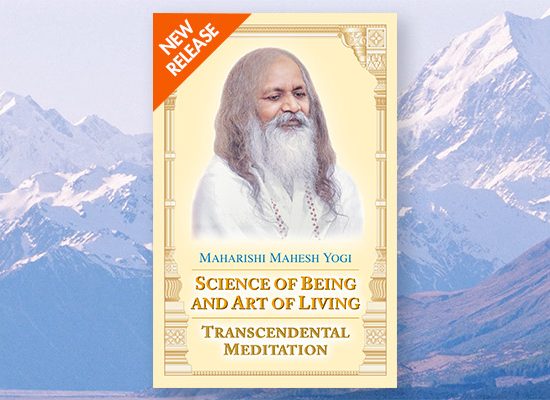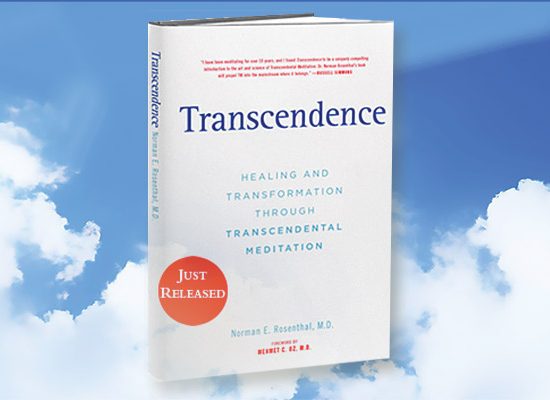This morning I picked up and opened a life-changing book that I first read 45 years ago. It brought back a flood of memories about how I discovered and learned the Transcendental Meditation® technique.
There was no TM Center in Oregon back in 1971. Luckily, two friends insisted that I attend a TM introductory lecture with them. I learned to meditate from a traveling teacher who was just passing through. After the four days of instruction, I never saw him again.
I enjoyed my TM practice right from the start and wanted to learn more about transcending and the development of consciousness. But in those days there was no Internet and no website like Enjoy TM News to provide a clearer understanding about the nature of life.
It turns out that the discovery of deeper understanding with each reading of the Science of Being was simply an expression of my own growth of consciousness.
Fortunately, there was one wonderfully rich source of knowledge to support my daily practice of meditation: Maharishi Mahesh Yogi’s first book, Science of Being and Art of Living.
A Source of Ever-Expanding Knowledge
The book is divided into four sections: “Science of Being,” “Life,” “Art of Living,” and “Fulfillment.” Whenever I read a section for the second or third time, I always discovered something totally new and amazing I hadn’t seen before. I’d say, “I can’t believe I missed that beautiful point the first time I read this book.”

First Edition of The Science of Being and Art of Living, 1963. (Photo by Eureka Books)
It turns out that the discovery of deeper understanding with each reading of the Science of Being was simply an expression of my own growth of consciousness. Maharishi refers to this as “expanding the container of knowledge.”
He explains that for greater knowledge to be appreciated and understood, it’s necessary for the container of knowledge—our consciousness—to become large enough to receive it. He said that when our awareness is awake, “the knowledge zooms forth.”
It’s like when you view a painting or listen to music more than once. Each time you can perceive more detail in the painting, or hear new sounds in the song. This effect is even greater when you practice the TM technique.
Through regular meditation, our brainwave activity becomes more orderly and coherent, and this development of consciousness allows our mind to appreciate deeper values of knowledge about the nature of life, including the deepest value of life, which Maharishi calls “Being.”
Being is at the deepest level of our own consciousness and is the source of everything that we say, do, experience, and feel.
What Is Being?
This is the first question that Maharishi asks in his book. His answer is, “Being is Life. It is existence. To be is to live, to exist. Being or existence finds expression in the different aspects of living: thinking, speaking, doing, experiencing, feeling. All aspects of life have their basis in Being.”
Maharishi often explained the underlying field of Being using the analogy of how the colorless sap is the source of nourishment for the entire tree. He also pointed out that Being is similar to Einstein’s vision of a unified field at the basis of all matter and energy.
Being is at the deepest level of our own consciousness and is the source of everything that we say, do, experience, and feel.
The Gift of Transcending
How can we contact this field of Being? Maharishi has shared a time-tested method for us to experience Being or pure consciousness directly, simply, and effortlessly—the Transcendental Meditation technique.
As Maharishi writes, “In Transcendental Meditation, when the mind transcends the subtlest state of thinking, it arrives at the state of Being. It is the state of no experience because the whole field of relativity has been transcended. It is just the state of transcendence, the state of existence, pure consciousness, is-ness, am-ness.”
Transcending is like watering the root of the tree. “Whatever influence of Transcendental Meditation there is takes place in the field of Being,” Maharishi says. “It is like a tree which receives water at its root, and consequently all the parts of the tree automatically receive nourishment and flourish.”
It’s through the regular alternation of transcending activity to experience the field of Being, and then returning to the field of action, that we are able to develop our consciousness and fulfill the purpose of life.
What Is the Purpose of Life?
“Expansion of happiness is the purpose of life, and evolution is the process through which it is fulfilled,” Maharishi writes in the second section of Science of Being. “Life begins in a natural way, it evolves, and happiness expands. The expansion of happiness carries with it the expansion of intelligence, power, creativity, and everything that may be said to be of significance in life.”
Maharishi often said that we are here to enjoy, and that life should not be a struggle. If we’re not happy and fulfilled, then something is missing. And the way to restore our natural level of fulfillment is through transcending, through direct contact with the inner field of Being.
Everything we’re doing in life—commitment to our family life and our career, the desire for greater knowledge and financial freedom, even giving back to our community—is motivated by a natural desire for growth, evolution, and the expansion of inner happiness and fulfillment.
“Life is dynamic, not static,” Maharishi writes. “The nature and purpose of life is progress, evolution, activity, and improvement.”
“Expansion of happiness is the purpose of life, and evolution is the process through which it is fulfilled.” —Science of Being and Art of Living
Living the Expansion of Happiness
The Science of Being and Art of Living is a gift that keeps on giving. The new edition is as valuable today as when it was first published in 1963. It includes Maharishi’s original unabridged text, plus an inspiring Afterword by Dr. Bevan Morris, International President of Maharishi Universities of Management, summarizing Maharishi’s activities and achievements over more than 50 years.
This book invites us to discover Maharishi’s earliest description of the fundamental nature of life—how to access it, how to unfold it, and how to live it. And it can help verify your current level of experience and inspire you to move forward in your effortless practice of TM and development of consciousness.
Whether you’ve been practicing TM since the 1970s or just learned TM last week, the Science of Being and Art of Living is a rich resource for your meditation practice, for understanding life more deeply, and for enjoying Maharishi’s gift to us all—the expansion of happiness.
This is the first part of a two-part article reviewing the Science of Being and Art of Living. Part 2 will explore the “Art of Living” and “Fulfillment.” Watch for it in an upcoming issue of Enjoy TM News.






Rolf, great article! Glad to hear you are alive and kicking! I just celebrated 47 yrs of TM. Beginning TM and practicing it daily has been one of the most important events of my life. I could only pay part of the $35 – and did the rest later. I asked a homeowner for some of his flowers that Sunday morning in October 1969 when I was walking home from teaching catechism. The beginning of a journey that found me meeting you Rolf in Biarritz, France on teacher training in 1976.
Thank you!
I’m so pleased to hear of this reprinting of the Science of Being and Art of Living. I began reading it first in 1970 after returning from Vietnam and just following my initiation in May while sitting in the water above Bidwell Park in Chico, CA . I quite remember that I couldn’t quite fathom Being at the time. I needed to cook my potato for awhile. I will order a copy right away. Jai Guru Deva